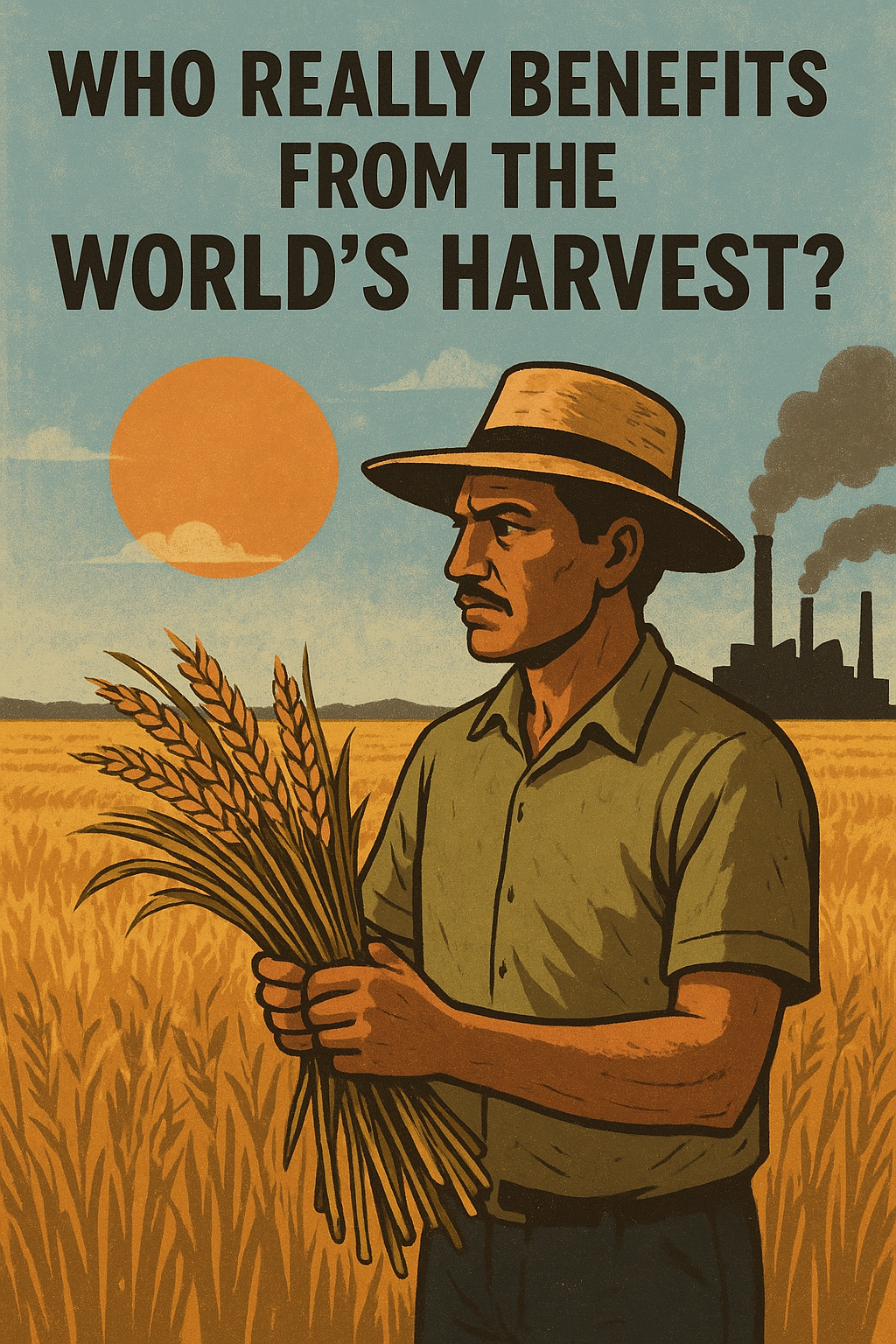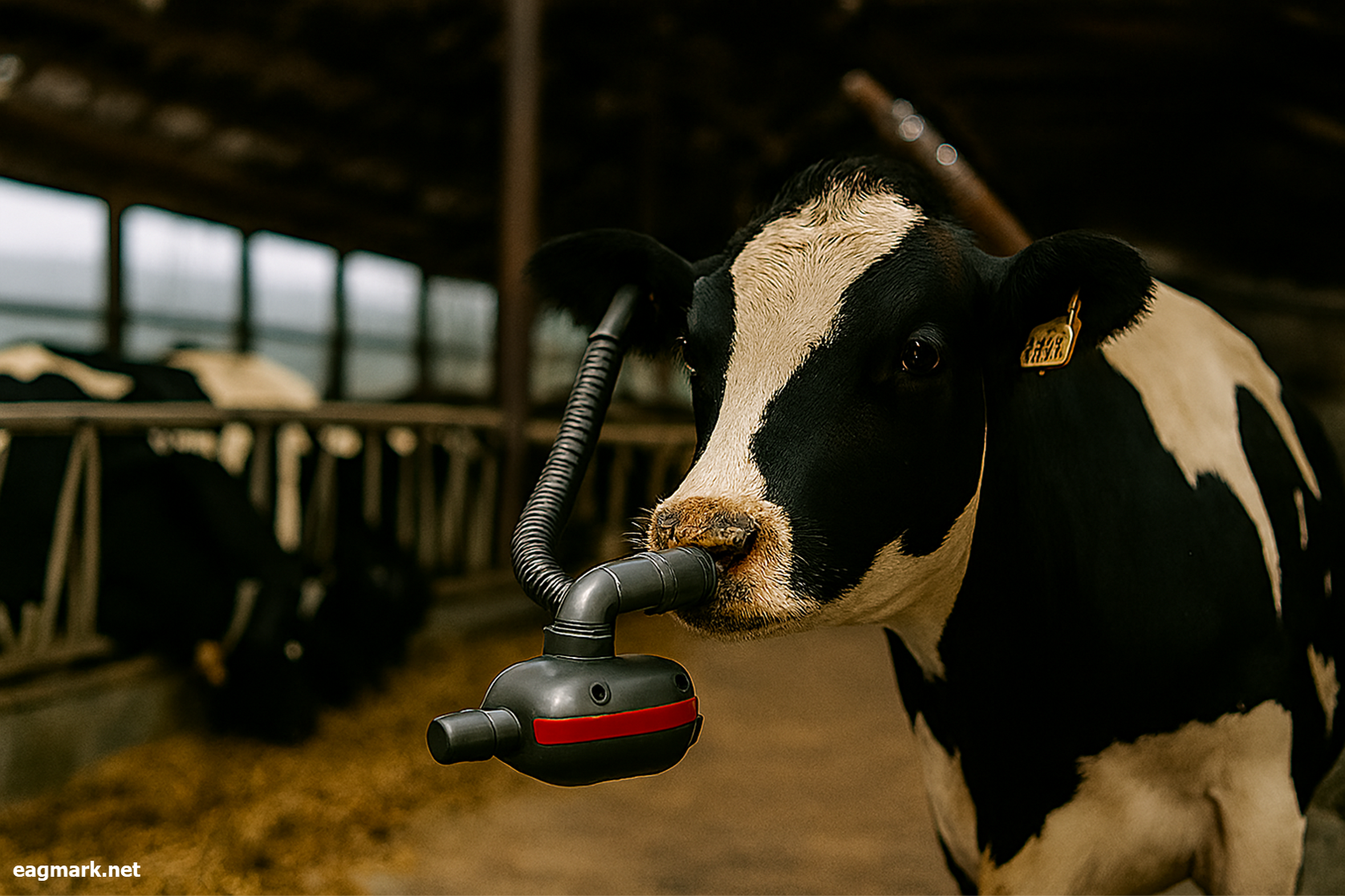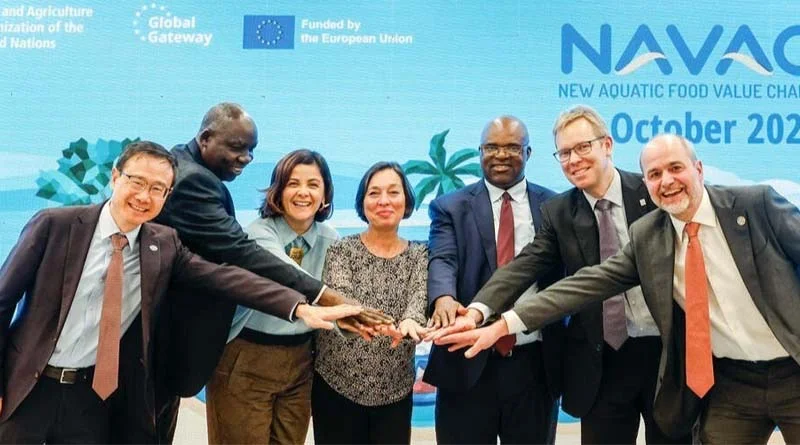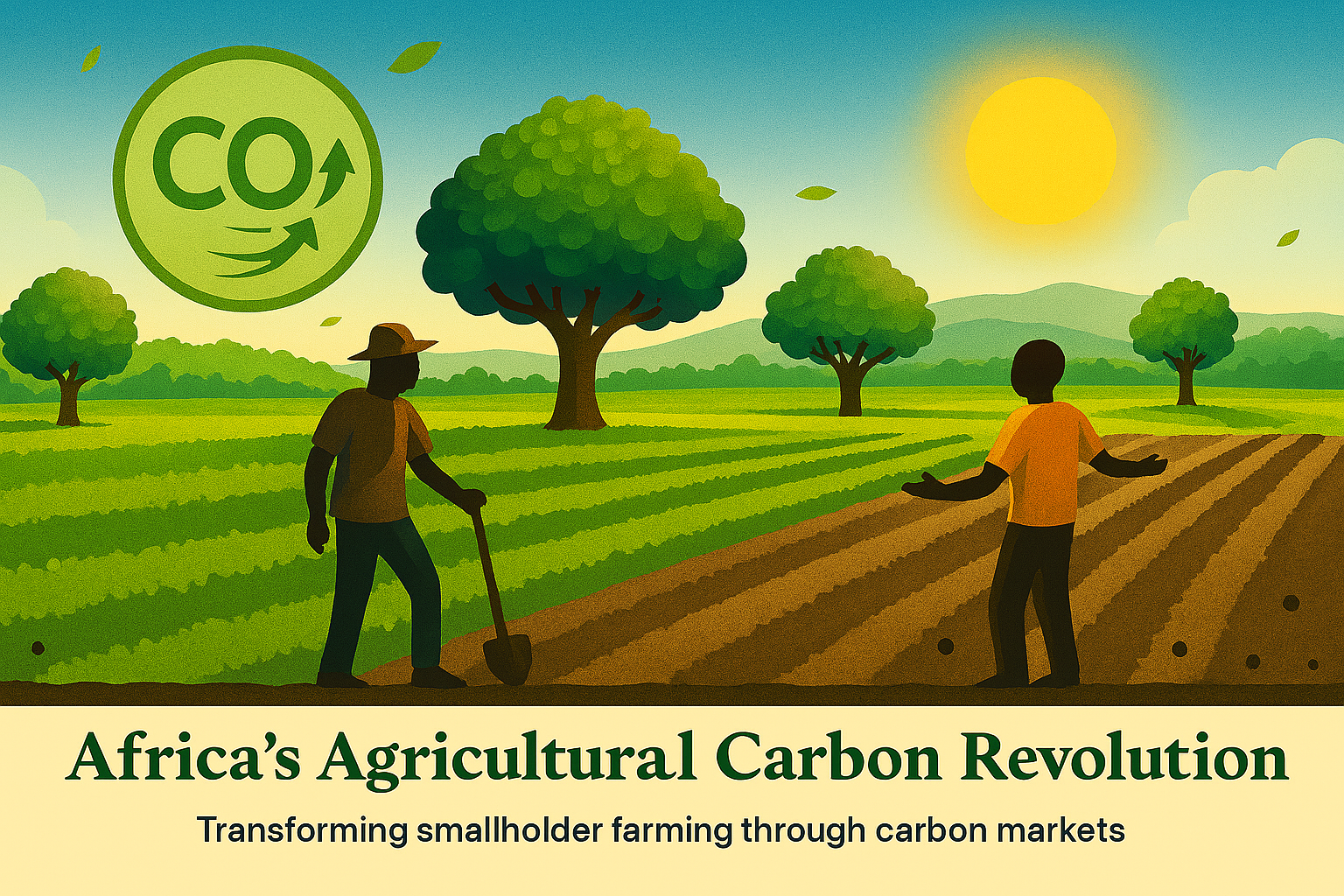
Farmers in the Global South produce over 70% of the world's crops. They receive 10 to 20% of the revenue.
A September 2025 study in Global Food Security, led by economist Jason Hickel, reveals where the rest goes. Between 60 and 70% flows to corporations in the United States, Europe, and Canada. Another 30% moves through financial hubs and tax havens in London, Amsterdam, and similar centers.
The gap isn't shrinking. It's widening.
The Production Shift
Since the 1960s, agricultural production has moved decisively south. Countries across Africa, Latin America, and Asia now grow the majority of rice, wheat, soybeans, palm oil, and poultry that feeds global markets.
In the 1970s, the Global North and South split production roughly equally. By 2025, the South dominates. Cheap labor, available land, and export-focused policies drove this transformation.
But the money didn't follow the crops.
Where Your Food Dollar Goes
When you buy food at the grocery store, the farmer who grew it sees pennies on your dollar. The rest gets captured at multiple points along the supply chain.
Processing companies like Cargill control grain storage and milling. They set purchase prices for farmers while selling finished products at market rates. Packaging companies add another layer of markup. Retailers take their cut.
Each step extracts value. The farmer, who bore the risk of weather, pests, and market fluctuations, gets what's left.
In India, this system created a crisis. Farmers shifted to export crops, expecting better returns. Instead, rural malnutrition exploded. By 2010, 76% of rural children were undernourished, up from 56% in the 1970s. The crops left the country. The hunger stayed.
The Ethiopia Case: Land Without Returns
Ethiopia shows how this plays out on the ground.
The country grows maize, wheat, and coffee on land families have worked for generations. Foreign investors, primarily from Saudi Arabia and the UAE, lease millions of hectares to grow crops for their own populations.
Local farmers get pushed off. They lose access to fields and water sources. The crops grown on their former land never enter local markets.
Since 2000, between 10 and 20 million hectares across Africa have transferred this way. The displaced farmers often can't grow enough food for their own families.
In 2025, Reuters documented land disputes in Congo where similar seizures threatened community stability. People who once fed themselves now depend on food aid.
Brazil's Soybean Paradox
Brazil is the world's largest soybean exporter. Its farms stretch across millions of hectares in the Cerrado and Amazon regions.
Foreign firms, mostly from North America and Europe, own increasing shares of these operations. They control the processing facilities that turn raw soybeans into oil and meal. They manage the export logistics.
Brazilian farmers grow the crop. Foreign companies capture the profit.
This model drives deforestation. Between 2020 and 2025, soybean expansion cleared forests at accelerating rates. Local communities lose biodiversity, water quality, and land access. The beef industry follows the same pattern.
The economic returns leave the country almost as fast as the soybeans do.
Foreign Ownership Closer to Home
The pattern isn't limited to developing nations.
In the United States, foreign investors own 43.4 million acres of farmland. That's 3% of total agricultural land, worth $74 billion. Canadian investors hold the largest share, followed by Dutch, Italian, and British entities.
Chinese ownership remains under 0.05% of total farmland, but it generates outsized concern. In September 2025, the USDA announced new restrictions on certain foreign purchases, particularly near military installations. Foreign holdings grew by 1.6 million acres in 2023 alone.
Australia tells a similar story. Foreign entities own 12% of farmland, roughly 48 million hectares. Chinese, British, and Canadian investors lead. Local farmers worry about losing control over water rights and land use decisions.
South Africa's Unresolved Legacy
South Africa faces a different dimension of land inequality.
White farmers, 8% of the population, own 72% of farmland. This distribution stems directly from apartheid-era policies that stripped Black South Africans of land rights.
Land reform efforts have stalled repeatedly. When Zimbabwe attempted rapid redistribution without adequate support systems, food production collapsed. South Africa watched and hesitated.
The question of who should own the land remains politically explosive and economically unresolved.
The Cost Structure Trap
Farmers in the Global South face a specific financial squeeze.
They buy seeds, fertilizers, and pesticides from multinational corporations based in the North. Bayer, Corteva, and Syngenta control the majority of commercial seed markets. Prices rise steadily.
These same corporations, or their subsidiaries, often buy the harvest. They set purchase prices based on global commodity markets where farmers have no negotiating power.
The farmer pays Northern prices for inputs and receives commodity prices for outputs. The margin disappears.
On social media, particularly X, farmers and activists describe this as a system designed to extract value from the South. A 2021 Nature study quantified appropriated labor at 826 billion hours annually, though the methodology for this calculation remains debated.
What Actually Works
Some interventions show measurable results.
Vietnam reformed its tea and coffee sectors in the 1990s. The government helped small farmers form cooperatives that could negotiate directly with buyers. Farmers gained access to quality certification programs that commanded premium prices. Rural incomes rose significantly.
Kenya renegotiated contracts with tea companies to increase the share going to farmers. Combined with better processing facilities owned by farmer cooperatives, this shifted more value to producers.
At the September 2025 BRICS Summit, India's Prime Minister Modi called for reformed trade rules that account for the true cost of production in the Global South. He proposed mechanisms to ensure farmers receive prices that cover costs plus a living wage.
The USDA's new foreign ownership database, launched in 2025, creates transparency. You can now track who owns agricultural land and where capital flows. Transparency doesn't solve the problem, but it makes the problem visible.
Technology transfer matters. When Southern farmers access the same precision agriculture tools, drought-resistant seeds, and market information as Northern farmers, productivity gaps narrow. Aid programs focused on technology sharing show better long-term results than direct food aid.
The Control Question
The global food system generates over $1.5 trillion annually. The distribution of that revenue determines who eats well and who goes hungry.
Current structures concentrate control in corporate boardrooms far from the fields. Farmers bear production risk while others capture profit. Communities lose land while their crops feed distant populations.
This isn't sustainable. It's not just about fairness. A system that impoverishes the people who grow food creates fragility. When farmers can't afford to farm, production drops. When communities lose land, social stability fractures.
The solution isn't simple. It requires reformed trade agreements, stronger farmer cooperatives, transparent land ownership records, and policies that prioritize local food security over export revenue.
The farmers who feed the world deserve more than pennies on the dollar. They need a system that values their labor, protects their land, and ensures they can feed their own families first.
That's not idealism. That's basic economics.


